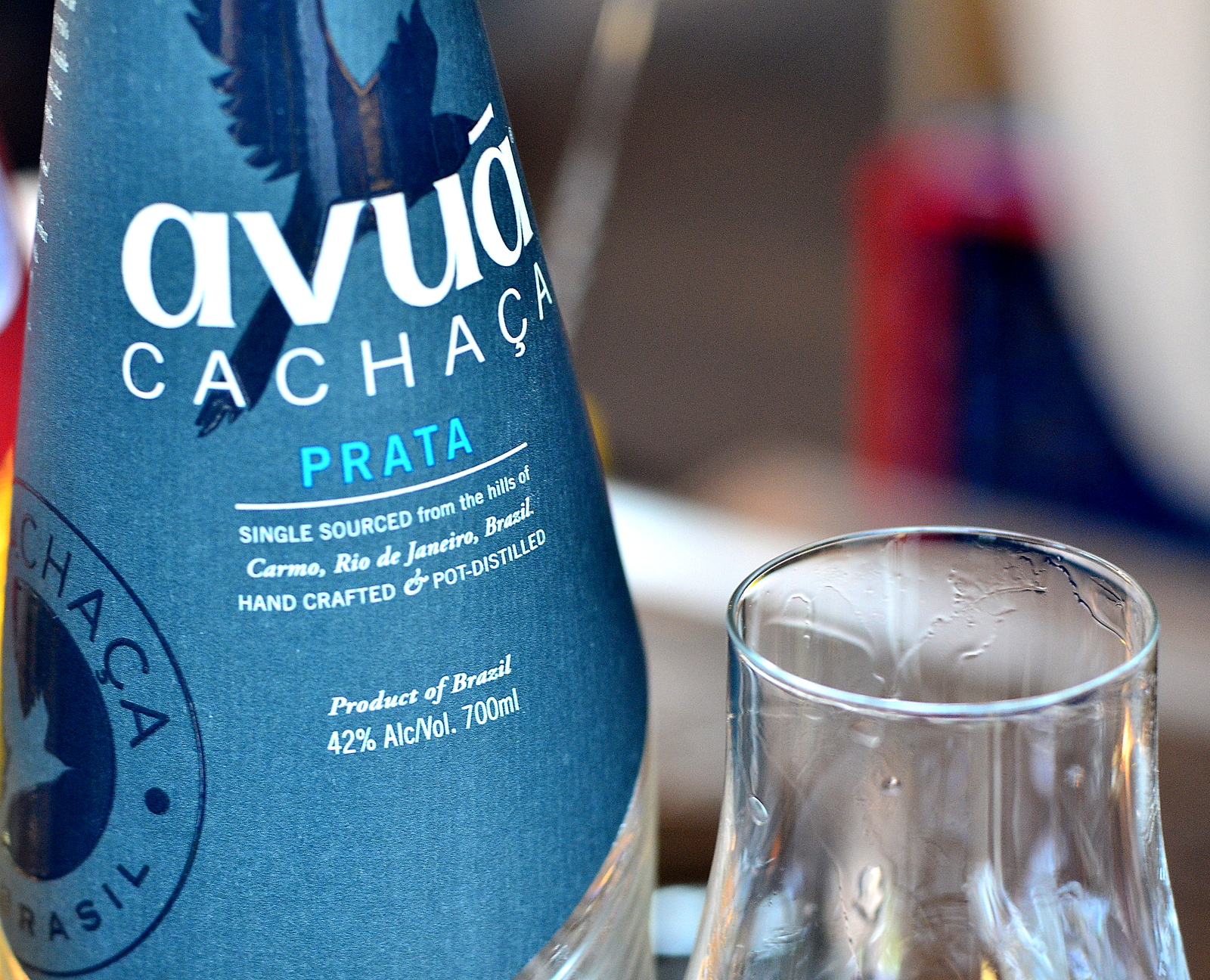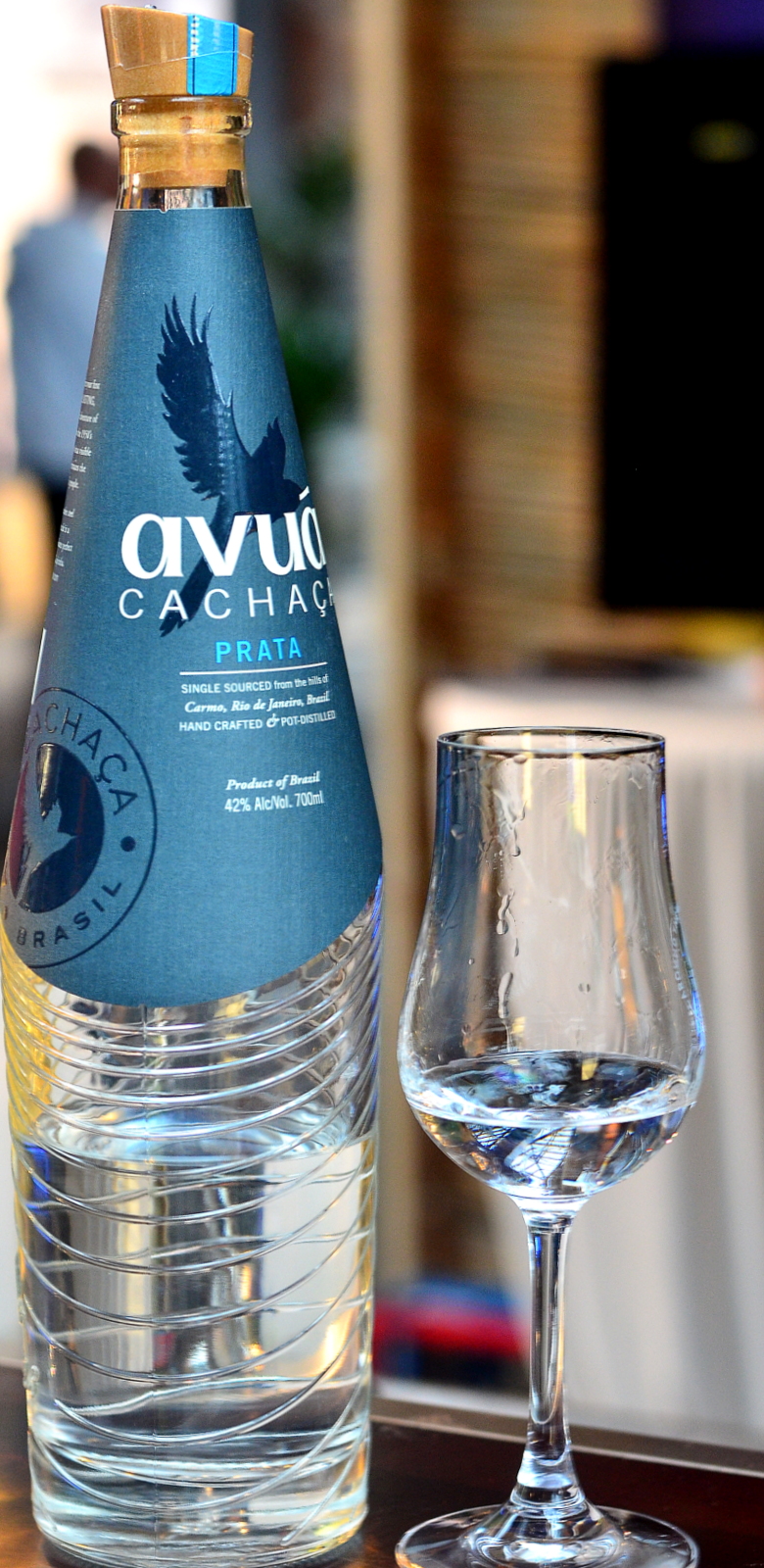
#494
The Avuá brand of cachaça has a slightly different pedigree from independents in Europe who buy from brokers, and is closer to that of small new rum companies who buy selected stock direct from distilleries (e.g. Whisper, Toucan, and Real McCoy, for example). Two New Yorkers – one a former brand manager for Red Bull, Pete Nevenglosky, the other a businessman and lawyer, Nate Whitehouse – developed a liking for the spirit and sensed (or thought they could exploit) a rising appreciation for craft spirits in the US – rum generally, cachaça specifically. After some searching and sampling around, they settled on Fazenda da Quinta Agronegócios, a distillery just outside Rio dating back to 1923 which produces the trio of the da Quinta cachaças — an Amburana-aged, an oak-aged and a white. Starting with the Aburana and the white, these were rebranded for sale in the US as Avuá Amburana and Avuá Prata but I have not been able to establish anything particularly original about them that would set them apart from the da Quinta line
 Never mind. Quite aside from these biographical details, I’m always on the lookout for interesting white rums, and so made it a point to check out the Prata just to see how well it fared. Which was, for a 42% rested-but-not-aged pot still rum, not shabby at all, if not quite as feral or in-your-face as some of the French island blancs, or, for that matter, the clairins. In fact, nosing it, the Prata presented as a rather genteel variation of such more elemental whites – akin to Cabo Verde grogues, really – and for that reason may actually be preferred by people who are put off excessive expressions of crazy and are more middle of the road. It was redolent of sugar cane juice freshly pressed, oily, briny and with some olive action in the background, but also herbal notes of dill and a little sage, some faint rubber hints, and subtle acetone and florals rounding out the profile.
Never mind. Quite aside from these biographical details, I’m always on the lookout for interesting white rums, and so made it a point to check out the Prata just to see how well it fared. Which was, for a 42% rested-but-not-aged pot still rum, not shabby at all, if not quite as feral or in-your-face as some of the French island blancs, or, for that matter, the clairins. In fact, nosing it, the Prata presented as a rather genteel variation of such more elemental whites – akin to Cabo Verde grogues, really – and for that reason may actually be preferred by people who are put off excessive expressions of crazy and are more middle of the road. It was redolent of sugar cane juice freshly pressed, oily, briny and with some olive action in the background, but also herbal notes of dill and a little sage, some faint rubber hints, and subtle acetone and florals rounding out the profile.
The palate was not overly aggressive – at that strength it would have been surprising if it had been – and while quite dry, it reminded me somewhat of the unaged column still clairins, just gentler. It was warm, sweet, and almost delicate, and also contained some of Neisson’s tequila and briny notes. Sugar water (and that’s white sugar, by the way), more dill, sage, rosemary and a little cinnamon, but what distinguished it after a few minutes was an unique (for cachacas) taste of musty earth and wet tropical vegetation that bordered on the funkiness of a Jamaican without ever actually being so. The mouthfeel was rather light, warm and relatively smooth, so certainly the initial cuts and the resting period had their impact. As for the finish, nothing original there – just warm, aromatic sweet spices, and a vague mustiness that was far from unpleasant and made the rum stand out in its own way.
As a white rum the Prata cachaça carves out some interesting territory for itself: it’s not so crude and jagged as to be off-putting to the greater public; its tastes are pleasant, yet distinct enough not to be confused with other whites; and overall, one weakness (much like the Toucan No. 4) is that for the complexity that it does exhibit, it could easily be stronger and lose no adherents. One is left with rather more titillating sensations and vague sensory memories than an explicit and clear-cut profile, and it showcases emergent potential rather than a solid current achievement. It’s interesting to note that the company is now also producing a Still Strength version (45%) to maybe address precisely this issue, and if they are doing that, we should be keeping an eye out for what else they’re doing in the next few years. Because if they ever have the bolas to issue this white rum’s same profile at 50% or greater, I’d probably grin, take a deep breath, and dive right in.
(82/100)